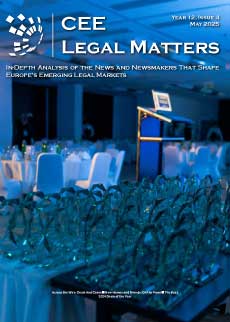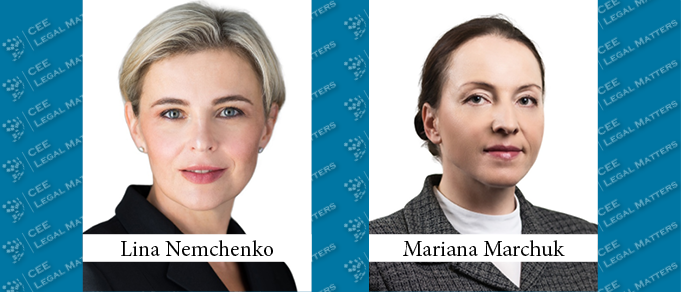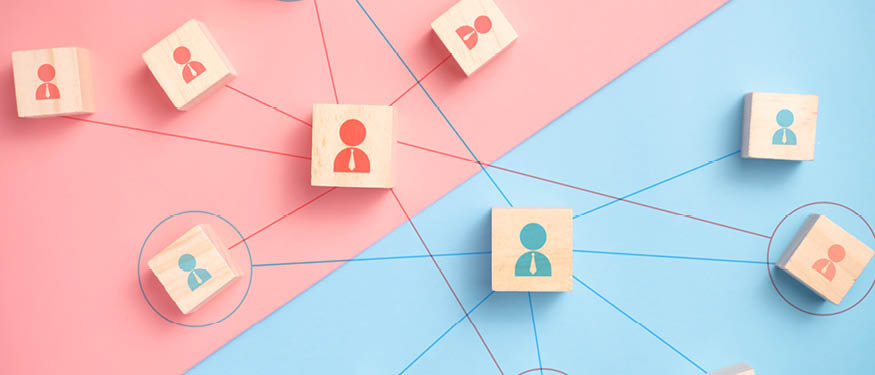On November 9, 2022, Magyar Telekom’s Legal Service Evolution Squad unveiled its largest service development project yet – the Legal Magic Book – during the company’s annual Love Your Lawyer Day event. We sat down with Magyar Telekom Group Legal Director Daniel Szeszler and Legal Service Evolution Squad Product Owner Botond Ungvary to learn more about the book and the team behind it.
CEELM: What is the Legal Service Evolution Squad and how did it come to be?
Szeszler: This is the result of our focus on well-structured legal process and service management; and our willingness to engage in legal technology and innovation. Before the Squad, we used to have an innovation team within the Legal Directorate. Later, we realized a phenomenon that, in our opinion, is a typical one for many in-house legal teams – while they often have the willingness to develop processes and themselves as a team – most of them don’t have the dedicated resources and a clear setup to develop services. We set up the Legal Service Evolution Squad this January, with a team of dedicated and focused individuals from within the Legal team. We carved out some resources from our colleagues’ full-time work, to focus their attention and time on matters beyond our core legal activities. Botond, as the head, dedicates 75% of his time to the Squad, which also involves junior and senior employees. Now that ten months have passed, we’re very enthusiastic to see some significant results becoming a reality.
CEELM: Where does the Squad fall within the broader legal department of Telekom?
Szeszler: Magyar Telekom has a team of 35 lawyers in total. We have four CoEs (Centers of Expertise), focusing on B2C, B2B, data protection and labor law, and corporate governance and general legal matters. We also have two squads: the Cross-Functional Legal Services Squad and the Legal Service Evolution Squad. The latter is the only one not providing legal services directly to clients but working on our internal endeavors.
CEELM: When did you feel the need to establish the Legal Service Evolution Squad?
Ungvary: It was a natural process. There were moments when we reflected on how we should innovate and change our internal processes within the Legal team. We started with different projects and organized courses for the Legal team to upskill them digitally and, in that process, we started using specialized IT tools. When we received excellent feedback, we began to work on specific projects, i.e., how to digitalize small processes. After establishing the Squad, we started with planning. Now we have a solid roadmap with clear goals, milestones, and steps to continue the development.
CEELM: What projects has the Squad been focusing on?
Ungvary: The keywords would be uploading, upskilling, and upgrading. We want to move to a digital work environment – to upload every useful tool for lawyers into common shared storage that is searchable. One of the first steps was building a unified template database, that includes more than 400 documents as of today, such as contract and letter templates. This is integrated into our text editor application and, accordingly, it won’t be necessary to switch to another application to work with these documents. We also launched an app called Time Saver to address workload – colleagues who are overloaded can now signal their need for support from their team leads on a regular basis with just one click, without the need to proactively engage. This tool replaced a rather complicated timesheet application we used in the past.
Szeszler: The Squad is also responsible for professional development and soft skill development within the team, with internal training programs every semester. These programs are not limited to legal knowledge development but also aim to improve technical and soft skills, such as assertive communication, simple writing and IT skills, as well as background knowledge on relevant finance and technology topics. We also have a well-established internship program, with the interns doing substantive work. We realized, over the years, that it is an excellent recruitment tool – we have hired seven former interns after graduation as full-time colleagues so far.
CEELM: What is the Legal Magic Book and when was it launched?
Ungvary: The Legal Magic Book is our largest service development project in 2022. It is a self-service tool for our internal clients. It was launched on November 9, during our Love Your Lawyer Day event. It is the platform holding all our digital legal services together, including our Template Database (available not only for in-house lawyers but for internal clients as well), several legal guidance pages (approximately 100 pages at the moment), and self-service interfaces. Our newly developed digitalized legal services will be provided through this platform to our internal clients going forward. It will automate and semi-automate many processes: for instance, requests for e-signatures can already be made through this platform. Another key element of the platform is a legal chatbot, helping clients to navigate through the platform and find simple answers to their questions.
Szeszler: It’s fair to say that the Legal Magic Book has two target audiences: one is our in-house legal team, and the other one is our internal clients. Our lawyers will be able to reach quite a lot of information through this platform, while for internal clients it will be a self-service tool. The general idea is that internal clients shouldn’t have to run to lawyers every time they have a simple, frequently asked question, but they should be able to find the answers themselves. We believe that it will save lawyers’ time, avoid having to answer the same questions repeatedly, and keep them busy with bigger topics.
CEELM: What tasks does the Legal Magic Book aim to streamline?
Ungvary: There are two big improvements. First, the internal clients’ need to access legal document templates will be solved, as they will have easy access to document generation and editing. Second, internal clients’ inquiries for information either regarding existing contracts or legal questions can be addressed by the tools we mentioned.
CEELM: What lessons have you learned on the way here and how do you plan to leverage those?
Ungvary: One key message is that planning is essential. We are being reasonable with our resources and try to not overstep. What we do differently is that we do not start with buying software showcased to us, but rather see the problem and look at the potential solutions. Our colleagues and lawyers realize that a computer is much more than a typewriter. Often, it is not necessary to buy specialized software, but rather look at in-built digital functions, as there are many. There are many opportunities to unlock if a team can identify what their truly relevant needs are.
This article was originally published in Issue 9.11 of the CEE Legal Matters Magazine. If you would like to receive a hard copy of the magazine, you can subscribe here.















